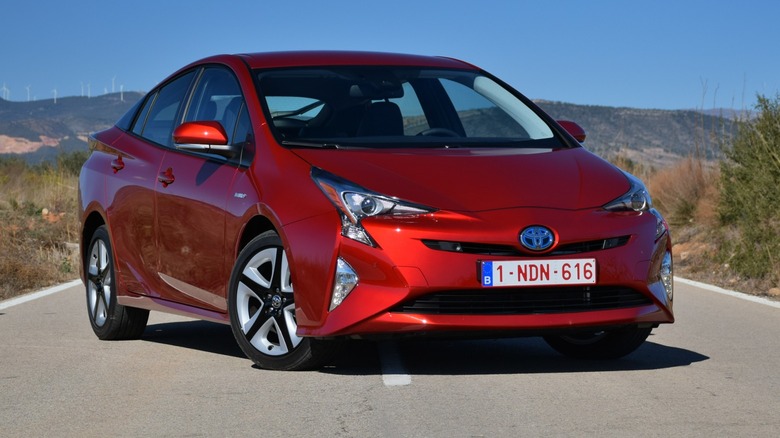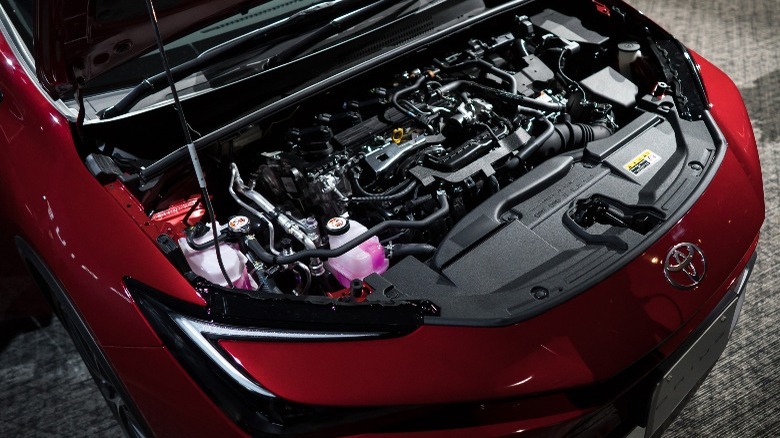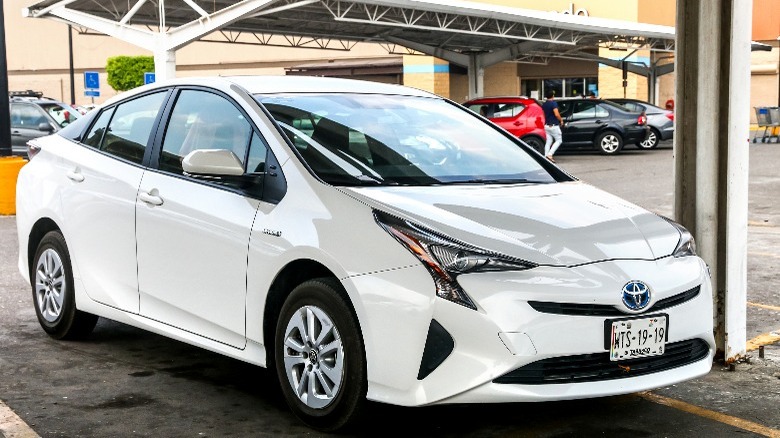Here's How A Toyota Prius Hybrid Engine System Works
Since its U.S. release in 2000, the Toyota Prius has been the subject of both mockery and admiration. While some deride the hybrid for its inconspicuous look and lack of traditional power, others celebrate the vehicle for its positive impact on the environment and the savings on fuel it provides drivers. Regardless of your opinion about the Toyota Prius, it has achieved legendary status in the last couple of decades.
But despite its ever-increasing popularity, most people still don't understand how the Prius works. Hybrid engine systems are incredibly complex and remain a relatively modern innovation. The simplest way to understand the Toyota Prius hybrid engine system is to identify its most essential components. Those parts include a traditional gas engine, a standard 12-volt battery, an electric motor/generator, a hybrid EV battery, a computer system, and a series of high-voltage cables and relays. When you press the start button in a Prius, a standard 12-volt battery sends power to the vehicle's computer. The computer then runs a series of quick tests to confirm all systems are working correctly before triggering the system's central relays. The relays, in turn, actuate the hybrid EV battery, allowing power to reach both the gas engine and the electric motor.
That's a simplified version of what goes on under the hood and under your seats when you start your Prius. Now, let's dive into the technical details and further explore how these systems work together.
What are the main components of a Toyota Prius hybrid engine system?
The Toyota Prius uses a series-parallel hybrid engine system. That means that it features both a traditional gas engine and an electric motor, with the electric motor including two motor-generator assemblies and a planetary gear system known as a power split device. The motor-generators, referred to as MG1 and MG2, control different parts of the vehicle and are responsible for charging the car's batteries, starting the vehicle, and sending power to the wheels. The power split device functions similarly to a continuously variable transmission in that it constantly adjusts and balances the power output that travels between MG2 and the electric motor. It manages the power transfer between the gas engine and the electric motor, allowing the power to be used as both electrical and mechanical energy for charging batteries and moving wheels.
The remaining components that make up a Prius hybrid engine system include a standard 12-volt car battery, a high-voltage hybrid EV battery, an inverter-converter, a computer system, relays, and a series of high-voltage cables. The 12V car battery functions similarly to a normal vehicle — in addition to activating the computer, it powers things like headlights, automatic door locks, and power windows. The high-voltage EV battery provides power to the electric motor and generators, while the inverter-converter controls the EV battery flow, routes EV battery energy between the generators, and charges the 12V battery when the car is running.
How does a Toyota Prius work?
When you press the start button inside a Toyota Prius, the vehicle's 12-volt battery powers on the computer system or electronic control units (ECUs). The ECUs then activate the system relays, which are responsible for controlling the hybrid EV battery and routing its power to other systems. The relays are designed to shut down and kill all power if they detect any errors or the car is involved in an accident. The relays allow EV battery power to reach the inverter-converter, which is responsible for controlling the amount of high-voltage energy traveling between the motor-generators and the EV battery, as well as charging the 12V battery.
The first motor-generator (MG1) functions like a silent starter motor due to its lack of a gear drive. It is responsible for starting the gas engine when necessary — like when driving over 15 miles per hour — and it serves as a generator for the hybrid EV battery once the gas engine is running. The power split device manages the power shared between the gas engine and the second motor-generator (MG2), which is responsible for turning the wheels when you hit the gas and utilizing passive energy — like when braking or coasting — to charge the hybrid EV battery.
The Prius' gas Atkinson engine uses cycle valve timing, meaning that the intake valves in the cylinder head remain open for longer than in a standard internal combustion engine. This results in fewer emissions and more efficiency but less power. The gas engine works together with MG2 to overcome this lack of power and make the Prius surprisingly sporty and great for everything from long road trips to running errands in town.


